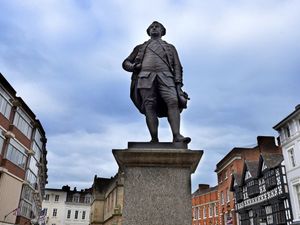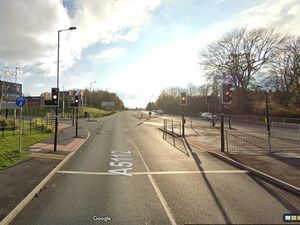'Time to have a look' if Shrewsbury's Clive of India statue should go, says heritage boss
A director of Shrewsbury's heritage celebrations believes it's "time to have a look" at whether the Clive of India statue should be torn down.
The imposing sculpture in The Square has been subject of much debate over the last week with nearly 20,000 signatures being collected on three petitions to pull the monument down.
A rival petition to keep the former Shrewsbury MP, who established British power in large parts of India and became very wealthy in the process, has picked up nearly 6,000 signatures.
See the petitions here:
The debate has raged after a campaign gathered pace to remove statues of people involved in the slave trade. It came in the wake of the killing of black man George Floyd after brutality from a white police officer in the US, and a surge in support for the Black Lives Matter movement.
The statue of Edward Colston was pulled down and dumped in a harbour in Bristol last weekend, while a monument of Robert Milligan was removed from the Museum of London Docklands.
Shrewsbury Heritage director and former councillor Andrew Bannerman believes it is a sensitive issue, but it may be time to consider removing Robert Clive from the town centre.
He said: "It probably is time to have a look at that.
"I can understand why people are extremely upset about the terrible death of George Floyd. The whole movement to try and make people understand how black people have been treated unjustly is incredibly important. I'm sympathetic with those people.
"It's difficult to be pro or con about this. A statue is usually put up to a person because at the time there was a big feeling that this person had given people a great service."
See also:
Mr Bannerman added: "How do you decide whether someone deserves a statue when they might have done something wrong in their life, but made a huge contribution?
"Clive's statue was put up because he was the MP and for his exploits in India in the Great British Empire.
"You wonder if there will be any left. I'm sure dirt could be dug up on most people who have a statue.
"There is a debate to be had on how we treat historic monuments."
He added: "In Colston's case, the statue was put up because he gave a lot of money to Bristol for things that were good for the community such as to build the concert hall. He wasn't celebrated in Bristol because he made money out of the slave trade."
The issue of whether the Robert Clive statue should be taken down will be debated at Shropshire Council's next full council meeting.
In brief: Who was Robert Clive?

Clive was born on the Styche Hall estate, near Market Drayton, in 1725 and went to school in London before travelling to India with the East India Company in 1743.
After two years in Britain, in 1755 Clive returned to India and two years later retook Calcutta (now Kolkata) for the company at the Battle of Plassey, a key moment on Britain's path to controlling Bengal and then India for almost two centuries.
Corruption and looting saw Clive amass a huge amount of wealth and he returned to Britain in 1760, aged 34.
He was made Baron Clive of Passey, knighted and became Shrewsbury's MP, a position he held until his death.
He went back to India in 1765 for two years before returning to Britain where the activities of Clive and the East India Company in India came under sustained attack.
The famine of Bengal that lasted between 1769 and 1773 and killed around a third of the region's population was said to have largely been caused by the company's policies.
Clive defended himself in Parliament, saying "I stand astonished at my own moderation," and in 1773 Parliament declared that he did “render great and meritorious services to his country.”
He died at home in London aged 49 and is believed to have killed himself.




